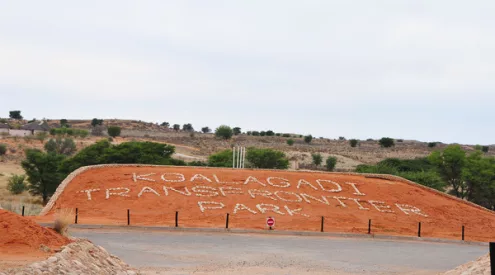A new island that formed only four years ago in Oceania, called Hunga Tonga-Hunga Ha’apai (HTHH for short), was recently visited by a group of NASA scientists as part of the space organisation’s ‘Earth Expeditions’, which is focused on monitoring how the earth is changing over time.
NASA wanted to get up-close to HTHH, which had previously only been observed from outer space to better analyse what was happening there, and what they found was fascinating.
Despite being very new for an island, this landmass already supports an entire eco system of lush vegetation and animals is flourishing. There’s a resident barn owl that’s made a home on HTHH and seabirds, who have taken a liking to their own private island, as well as pretty pink flowering plants. The thriving vegetation is thought to be due the droppings of birds flying overhead carrying seeds from neighbouring islands.
HTHH’s craggy crater holds a pool of the prettiest emerald-turquoise water, making the island a truly beautiful new addition to the surface of the earth. Sand blackened from the volcanic ash creates a striking and beautiful contrast in the oceanic landscape of blues and lush green. Where you see brown soil is the stretches of mud-like clay, which is baffling scientists.
The island is part of Tonga, a Polynesian kingdom comprising of nearly 200 islands, and is a rarity, being one of only three islands to have erupted and risen from the sea in the last 150 years.

Image: Sea Education Association / SEA Semester.
As most are, the island was formed by erupting from an underwater caldera in 2015.
Researchers from NASA’s Goddard Space Flight Centre in Maryland joined students and researchers from the SEA Semester Study Abroad programme in October last year on their visit to the new island.
According to Rachel Scudder, chief scientist from the sea programme, the mud-like clay appears to be ‘very soft’ and ‘easily erodible’, The mud, which should have eroded by now, still remains, and scientists suspect that HTHH may well be around for a while.
When new islands are formed, they often don’t last very long due to erosion from the waves and survive for only a few months. Scientists are particularly interested in the formation of new islands because it may help them understand the surface and landscape of other planets, like Mars.
HTHH is actually two-thirds of two other islands suspected to have formed in prehistoric times. Its name, in fact, comes from the two, which are called Hunga Tonga and Hunga Ha’apai.
View this post on Instagram
Featured image: Sea Education Association / SEA Semester
















